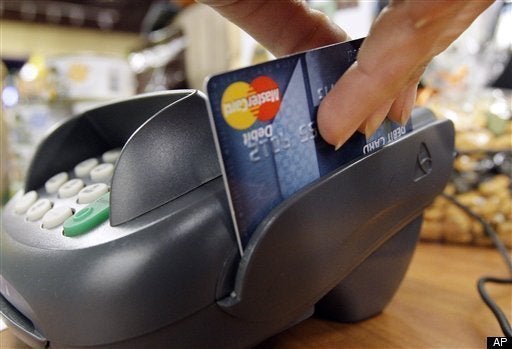
The real power of the Move Your Money campaign is helping people to solve their own financial problems. Healthy pride feeds our desire to create our own solutions -- and to send a strong message to mega-banks that we won't be their prey. That's why credit unions are a logical move. There's a very real story that's part of American history: neighbors, coworkers and church friends founded the majority of credit unions by pooling their money together, originally storing it in tin boxes, to give loans to one another when the banks wouldn't.
It's no surprise that searches to find local credit unions have tripled since the launch of Move Your Money. It's pointing the way to help make life just a little better for American families. The credit union movement soared in the Great Depression. People relied on their neighbors and friends to get through tough times. It's natural that people strapped with credit card debt, those facing foreclosure and small business owners with good credit that can't get a loan from the bank, are all looking to credit unions again now.
What's unnatural is the CNN report that switching banks is simply too much of a hassle. Really? Imagine a consumer stuck with $8,000 in credit card debt with a bank that jacked the interest to 28 percent. Is that consumer worried about the hassle of switching? That's exactly why a motley crew of socially responsible pro-credit union folk joined together with a former NASA developer to create the American Debt Relief Challenge.
To combat both the confusion created from predatory debt consolidation services and the abuses of banks skyrocketing interest rates on credit cards, we created a program to help consumers find credit unions that will transfer the balance of their debt out of a high-interest, mega-bank credit card back to traditional rate. Better yet we are measuring the amortized savings.
Our goal is to save American families $300 million. So far the American Debt Relief Challenge has calculated that participating credit unions have saved consumers $20 million that they would have spent on interest to keep their credit card balance at the mega-bank.
While not every move from a profit-maximizing bank to a credit union can be financially quantified, credit unions across the United States are participating in the American Debt Relief Challenge to put their money where their principles are, proving they are different than the banks.
How does it work? We encouraged credit unions to step up to the plate to help people with credit card debt, instead of shying away from the presumed risk. Those willing to help people with credit card balance transfers are added to a website so consumers know where to find them. The simple truth is the credit unions participating in the American Debt Relief Challenge leverage their not-for-profit status to offer lower credit card rates than big, for-profit mega-banks. When the consumer transfers their debt to a credit union, more of their monthly payment is applied to reducing the debt and less to cover a high interest rate.
Consumer miracle stories started to pour in from participating credit unions. The most jaw dropping example is credit union member Michael Wingate. He was shocked when his CitiBank credit card rate jumped from 4.99 to 40.99 percent. He has a stable job as a supervisor at an aircraft parts manufacturing company. His credit score is good, over 700. He made his payments to CitiBank on time.
The CEO of Generations Credit Union, Marylin Ball-Brown, whose credit union is participating in the American Debt Relief Challenge, said it was the highest credit card interest rate she'd ever seen. In the 1980's the rate would have been considered usury. It is an example of the difference between for-profit banks and not-for-profit credit unions.
Wingate's increased APR was the result of a predatory banking practice already addressed by the Obama Administration's Credit Card Accountability and Disclosure Act of 2009. While it curbs future abuses, the legislation unfortunately could not return Wingate's interest to a traditional rate. The credit union saved the family $33,000 over the life of the credit card by transferring the $10,400 CitiBank card balance to an unsecured loan with a traditional rate of 12.2 percent.
Some families are saving close to $200 a month through credit unions participating in the American Debt Relief Challenge. The goal of the American Debt Relief Challenge is to let consumers know to look to these specific credit unions first and, of course, to move their money.